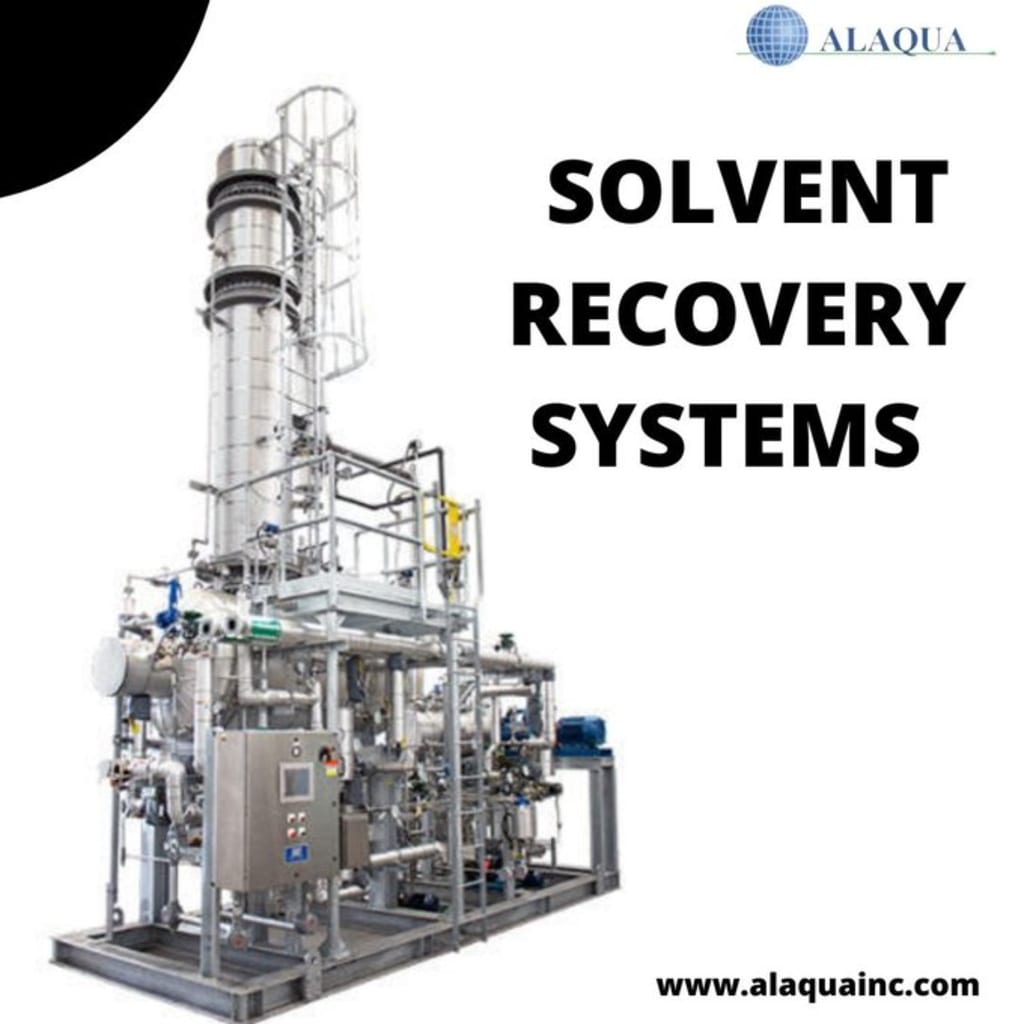Solvent Recovery at Pharmaceutical and Chemical Production Plants | Alaqua Inc
Due to the high cost of solvents, solvent recovery is an excellent way to save money.

Solvent recovery systems are devices that recover and reuse solvents used in cannabis extraction. Chemical solvents are too expensive, especially in the commercial cannabis business. Hexane, butane, propane, ethanol, and isopropyl alcohol, among other solvents used in cannabis extraction, may be recycled and repurposed.
After the solvents have been utilized, they are collected and sorted using distillery processes. Special distillery tanks are used to heat and segregate solvents as they approach boiling and condense into vapor. The steam vapor is collected and transported to a condenser that is air-cooled. After cooling, the solvents cool to a clear liquid that may be reused.
When analyzing a pharmaceutical, chemical, petrochemical, or medical device manufacturing facility's overall efficiency and profitability, the recovery and reuse of solvents used in the manufacturing processes is an essential issue. Organic solvent recovery and reuse have two advantages: it saves money on waste disposal and it saves money on chemicals. In a solvent recovery systems application, distillation is one of the most frequent processes.
The concentration/recovery of residual pharmaceutical products from the column discharge stream is secondary to the recovery of solvents with distillation technology. The usual way for facilitating improved pharmaceutical product recovery rates is evaporation technology following the column.
Work of Solvent Recovery System
The solvent recovery systems work when distillation separates volatile and nonvolatile solutions in a solvent. The solution is boiled, and the vapors are then condensed back into liquid in a separate tank, similar to how a vapor degreaser works. Solvents and pollutants boil at different temperatures: oils and soils boil at much higher temperatures than solvents. Paint thinner, which is used to remove paint from paint guns and parts, is an excellent example of this; because the solvent boils at far lower temperatures than paint, boiling the combination separates the pure solvent from the paint sludge components in one tank.
Simple Solvent Recovery
A single organic solvent in a water matrix with no impurities is the most basic design. Acetone, isopropanol, methanol, ethanol, and hexane are all common solvent recovery compounds. Two pieces of trays or packing make up a solvent recovery column. Having a water matrix and a chemical with a lower boiling point than water, the bottom portion of the column (stripping section) would first separate the water matrix and the organic chemical, while the top section (rectification section) would concentrate the organic chemical. Common software simulation applications like CHEMCAD and HYSYS may be used to create this binary system.
Solvent Recovery with Multi-components
More than one organic compound will be recovered at the following system level. The organic compounds are usually recovered in one stream and the water in the other in this configuration. To separate the two organic solvents, a second column is required. The vapor/liquid equilibrium data for the majority of common organic solvents is well-documented, which is essential to accurately replicate the separation process. Any trace of contamination should prompt pilot testing of the design to confirm that it meets the separation criteria.
Additional Challenges in Solvent Recovery
Many facilities have many manufacturing lines that use various organic compounds. It is feasible to create strong solvent recovery systems that can work in a variety of configurations to make solvent recovery from diverse production lines easier. A pharmaceutical manufacturing plant, for example, featured changing streams of solvents in a water matrix. The boiling points of the solvents varied from above the boiling point of water in Line 1 to below the boiling point of water in Line 2. The streams from both lines were multi-component, which added to the complexity. The miscibility of certain streams when corrected or concentrated, and the immiscibility of others, added a third layer of complication.
The distillation system was designed using a normal path of initial simulation work to establish operating conditions within the column, such as liquid/vapor ratios, reflux ratios, and utility needs, among other things. Due to a lack of empirical data to forecast a distillation separation process with multiple components present, a test strategy for the various streams was necessary. There were feed points at the top, middle, and bottom of the column in this layout. A three-section decanter was utilized to account for the "immiscibility factor." The three portions ensured the separation of a stream with both a greater and lower specific gravity than water in the presence of immiscible components. The decanter acted as a condensate tank for the above stream in the case of miscible components.
The pilot test provided the final operating parameters, and the requisite empirical data was used to build a full-scale plant.
Conclusion
Each new system is designed by experienced distillation engineers who draw on their previous experiences. Only half of the design is concerned with separating solvents and water. Because distillation is a high-energy process, the whole system design must account for this. Some applications can benefit from the use of cascading pressure in a multi-effect distillation system. MVR (mechanical vapor recompression) can also help with system efficiency. When comparing designs from various distillation equipment vendors, the total efficiency of the process should be considered.
Alaqua is a solvent recovery systems and other processing equipment supplier worldwide based in the US. Along with supplying processing equipment, they also provide processing equipment services such as equipment fabrication, installation and commissioning, personnel training, field, retrofitting, and troubleshooting services. For any queries and information related to processing equipment and its services, contact them today! For more info visit on site - www.alaquainc.com
About the Creator
Alaqua Inc
Alaqua is a reputed industrial evaporators supplier and we offer our evaporators products in various fields such as Food & Dairy industry, Pharmaceutical industry, Agrochemical industry, Herbal industry.






Comments
There are no comments for this story
Be the first to respond and start the conversation.